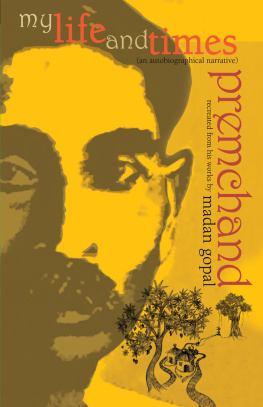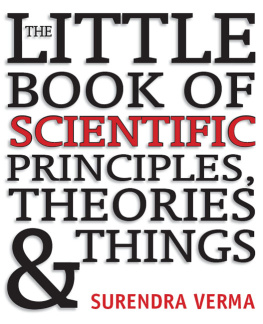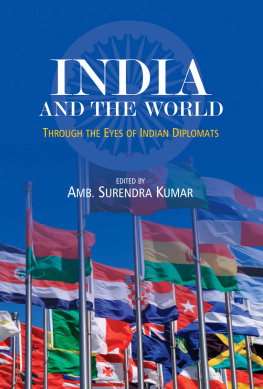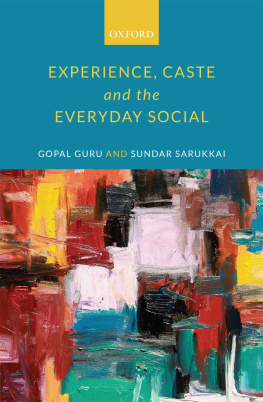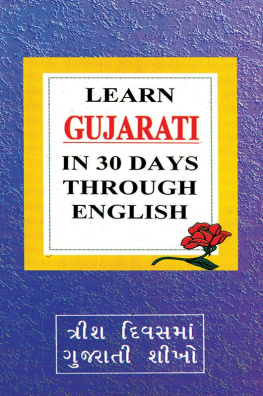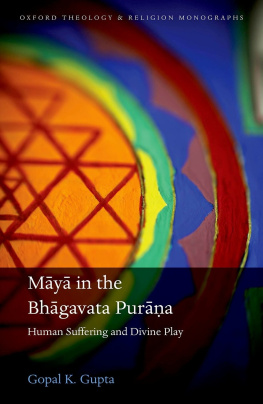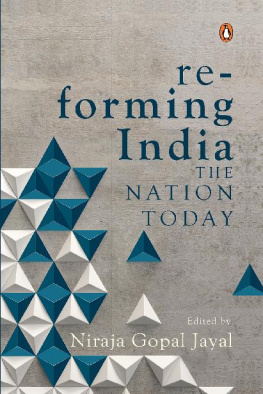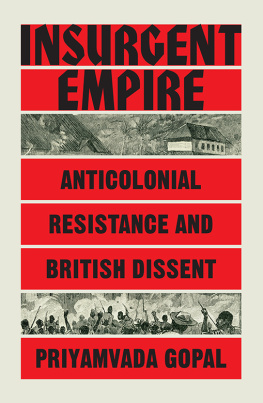First published 2017
by Routledge
2 Park Square, Milton Park, Abingdon, Oxon OX14 4RN
and by Routledge
711 Third Avenue, New York, NY 10017
Routledge is an imprint of the Taylor & Francis Group, an informa business
2017 Surendra Gopal and Manohar Publishers & Distributors
The right of Surendra Gopal to be identified as author of this work has been asserted by him in accordance with sections 77 and 78 of the Copyright, Designs and Patents Act 1988.
All rights reserved. No part of this book may be reprinted or reproduced or utilised in any form or by any electronic, mechanical, or other means, now known or hereafter invented, including photocopying and recording, or in any information storage or retrieval system, without permission in writing from the publishers.
Trademark notice : Product or corporate names may be trademarks or registered trademarks, and are used only for identification and explanation without intent to infringe.
Print edition not for sale in South Asia (India, Sri Lanka, Nepal, Bangladesh, Afghanistan, Pakistan or Bhutan)
British Library Cataloguing in Publication Data
A catalogue record for this book is available from the British Library
Library of Congress Cataloging in Publication Data
Catalog record for this book has been requested
ISBN: 978-1-138-28029-8 (hbk)
ISBN: 978-1-315-27220-7 (ebk)
Typeset in MinionPro
by Ravi Shanker, Delhi 110 055
As a school student in the 1940s, I liked reading biographies and autobiographies. Some of these, referred to Hindus being ostracized from their caste on their return from a visit to European countries. The excuse was that religion debarred Hind from crossing the seas. Orthodox Hindus refused company to the returnees during ceremonial feasts. Traditionalists even at times refused to marry their daughters to the ostracized' Hindus. With the passage of time, however, attitudes began to change. Crossing the seas stopped being a taboo for tradition-bound Hindus. Yet, this ritual associated with the Hindu religion remained fresh in my memory.
When I wrote about the commerce and crafts of Gujarat in the sixteenth and seventeenth centuries, I found Hind Gujarati traders along with their compatriots visiting Saudi Arabian countries such as Yemen and Oman and the ports around the Persian Gulf. Eastward, Hindus went to Burma, Indonesia, and other Southeast Asian countries. They even visited China. I was surprised. I decided to find out more about Hindu visitors to these places. From time to time I published papers on Hindu traders outside India, and the present volume consists of some of these papers.
The task was difficult. None of the emigrant Hindu trader left written accounts of their activities in foreign countries. This is strange. Hindu traders were found in foreign countries throughout the seventeenth and eighteenth centuries. Some of them were not occasional visitors for brief periods. They quit when the countries were devastated by famines and other natural problems or political and military upheavals. Whatever information is available in these books is written by non-Indians. The foreigners were excited because of the peculiarities they discovered about Hindu traders who did not eat with non-Indian traders. They were told that Hindu traders were basically vegetarian. The Hindus were idol worshippers. To Muslims this was strange. They were totally opposed to image worship in any form.
Some of the customs followed by Hindus made Muslims and Europeans more curious. Hindus did not bury the dead but cremated them.
Though very small in number, Hindus could not be ignored. Some were efficient and successful traders. They had capital, which they could lend or invest, and it was not unusual for European businessmen to enter into agreement with Hindus in these countries. Hindu marchants and agents of European trading companies thus supported each other.
However, Hindus are not known to attempt to learn the language or culture of European colleagues. We find hardly a Hindu trader speaking a European language: They ignore European society and culture. Instead, Persian or Arabic was the language of international commerce, and Hindus were familiar with these languages.
I have used Russian language sources in writing these papers. Four papers are on Indians in Russia in the seventeenth and eighteenth centuries. Indian traders went to Russia for the first time in the seventeenth century. The Russian government supported them, and settled them in Astrakhan. Once established, they remained there for more than a century. In and around Astrakhan, they built temples with idols and even brought a priest from India.
One of these traders, Marwari Barayev was the richest. He was said to know Russian, and the Russian government utilized his services in their attempt to establish a direct trade route to India. His success excited the jealously of some Russian bureaucrats who resented the royal favours showered on him. He was arrested though later released, the days of this prosperity were over. He became a Christian and quietly faded away from history.
Indian traders realized that political and royal support, were essential for success in those days. The European trading companies in the East flourished for centuries because the state administration extended them all possible support, political, economic and military. Viewed from this angle, the achievements of Hindu traders were praiseworthy.
On the Asian continent, Indian traders remained active all over Iran. Geography was responsible for this: Indians could go to Iran both by land and sea routes. From Iran they could cross the Caspian Sea and settle in places along the western Caspian coast. The local authorities co-operated. Indians were allowed to build temples both in Iran and towns around the Caspian Sea. They were allowed to follow their rituals.
At the beginning of the nineteenth century, with the advent of the industrial revolution, things changed. Steam engines radically altered the transport system. Indian traders were forced to look for new opportunities and adjust to the changed economic and political systems. A chapter in the history of emigrant Hindu traders was over.
I record my thanks to people who have helped me in preparation of this manuscript.
I remember late Prof. K.A. Antonova, whose example continued to guide my historical researches. Prof. L.N. Ram encouraged me to continue studies after retirement. Sri Ghufran Ahmad, Dr. Shailendra Kumar and Dr. (Mrs) Namita Kumar helped me when the typescript was prepared and assisted me in a variety of ways.
My friends Prof. Hetukar Jha and Dr. Sudhir Kumar Jha, I.P.S. (Retd.), and Prof. Ashok Gupta have been sources of inspiration, whereas my Russian friends Prof. Alayev and Drs Eugenia Vanina and T. Zagorodnikova inspired me to continue my researches.
Finally, I am grateful to Sri Ramesh Jain, of Manohar Publishers for publishing this volume.





